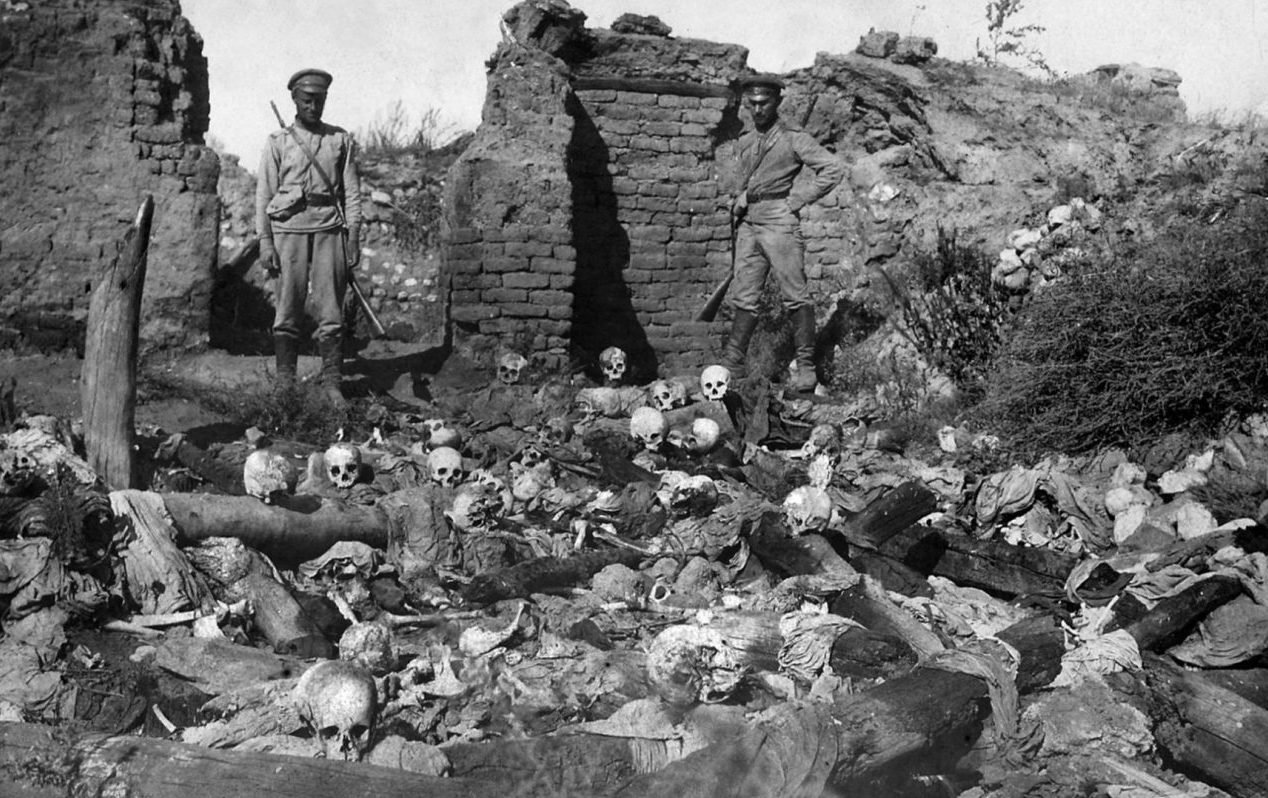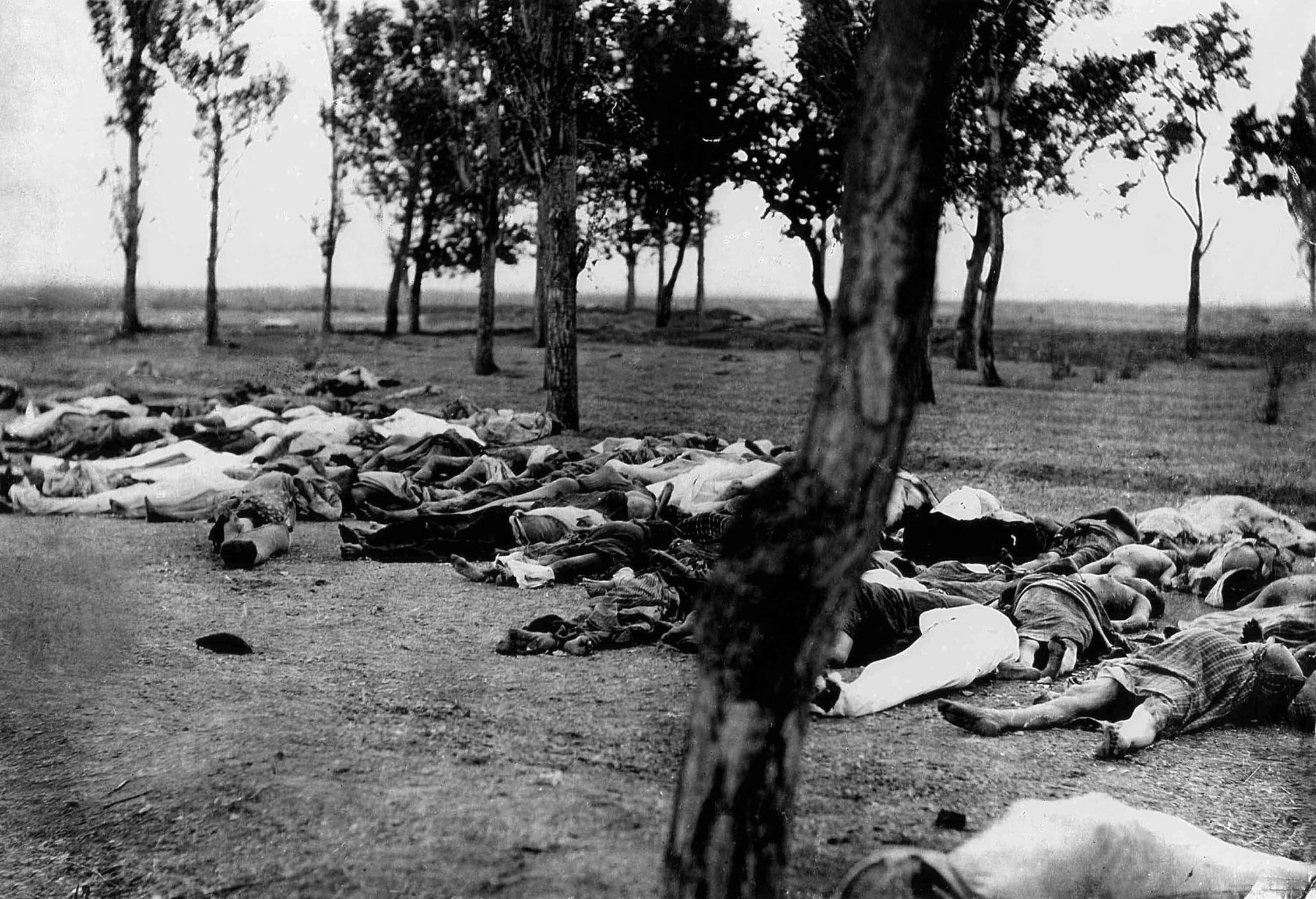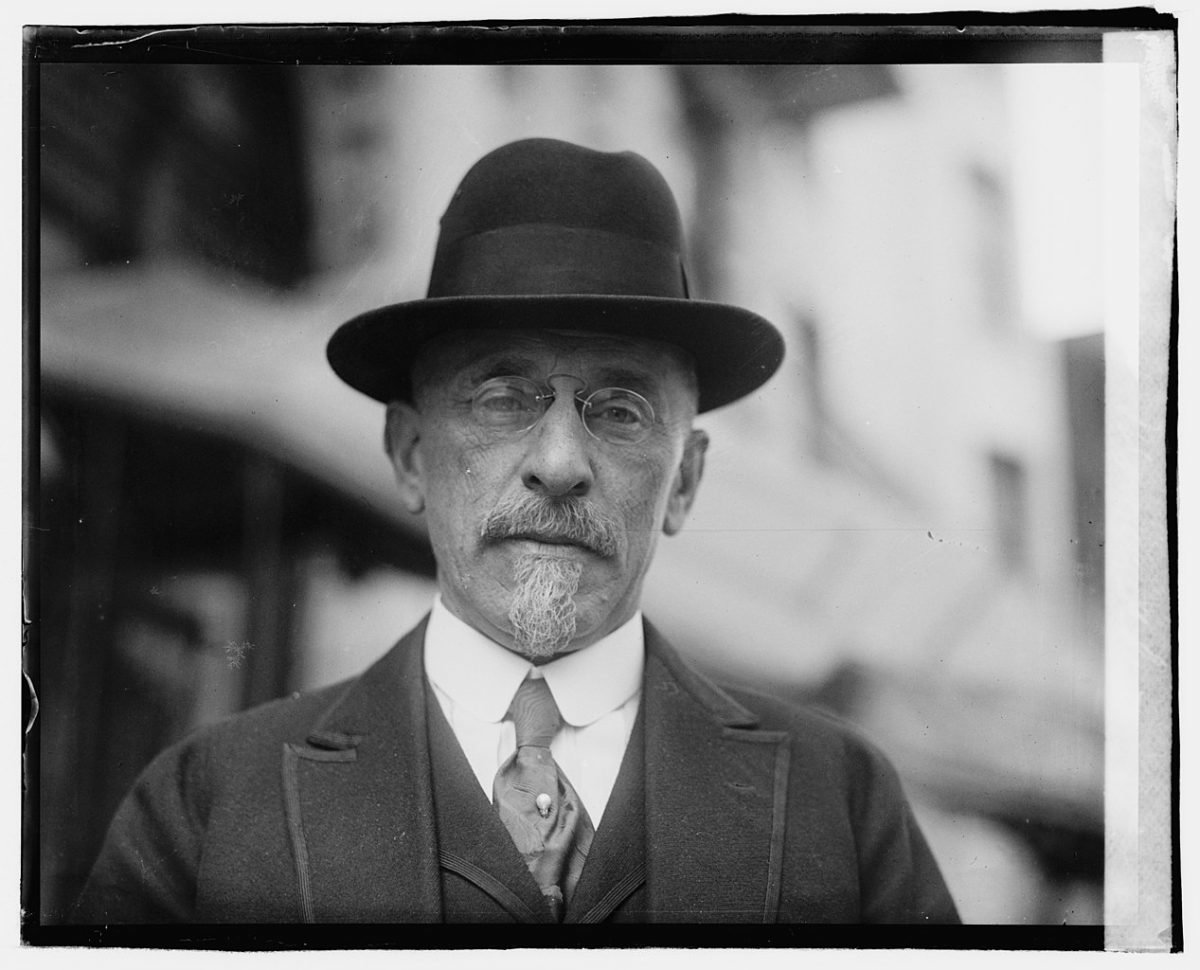Response to the Massacre of Armenians Spurred US Humanitarian Effort

Russian soldiers killed Armenians near Sheykhalan village, Mush. Photo courtesy of Wikimedia Commons.
When the US sent Henry Morgenthau Sr., a Jewish lawyer and businessman, to be ambassador to the Ottoman Empire in 1913, he had very little understanding of the culture. He did not comprehend the Muslim Turks’ enmity toward the Christian Armenian people and assumed they peacefully co-habited within the Ottoman Empire.
Events on the ground belied that assumption.
Morgenthau went on to become the top American diplomat to advocate for the Armenian people as he bore witness to the tragedy of mass killings the Turkish officials orchestrated. In the 2003 book, The Burning Tigris: The Armenian Genocide and America’s Response, author Peter Balakian explains: “By the spring of 1915, Morgenthau began receiving detailed dispatches and telegrams about the deportations and massacres of the Armenians from his consular staff in the interior of Turkey.”
To no avail, Morgenthau sent several dispatches back to the US and called on President Woodrow Wilson to intervene on behalf of the Armenians.

After they came to power in 1909, the Young Turks — a Turkish political reform organization — clashed with members of the Armenian intelligentsia. “In cities, towns, and villages everywhere, Armenian cultural leaders were arrested, tortured, and killed as quickly as possible,” Balakian writes in The Burning Tigris.
A nationalist faction of the Young Turks, the Committee of Union and Progress, or CUP, initiated a widespread wave of violence against the Armenian people in 1915. Morgenthau described CUP as “an irresponsible party, a kind of secret society [that ruled by] intrigue, intimidation, and assassination.”
On the orders of Talaat Pasha, a mercurial member of the CUP, the Ottoman military sent Armenians on a death march to concentration camps in the Syrian desert in 1915 and 1916. Along the way, the deported Armenians were beaten, starved, murdered, and raped, according to multiple historical accounts of that period. Historians estimate that approximately 800,000 to 1.5 million Armenians died during the course of these mass deportations.

Morgenthau was sickened at the plight of the Armenians. He practically begged Wilson for assistance and support for the Armenian people. However, it would be ordinary Americans who put up aid for the Armenians with the establishment of the Committee on Armenian Atrocities, or CAA.
Congress incorporated the CAA in 1919 under the new name Near East Relief. This revamped organization raised more than $116 million for Armenian aid, equivalent to more than $1 billion in 2021.
“At that first meeting [of the committee] one hundred thousand dollars were raised,” Balakian writes in The Burning Tigris, describing the committee’s founding meeting. “None who met that day could have imagined that out of that ad hoc committee would emerge one of the most remarkable international philanthropic agencies in American history.”
President Theodore Roosevelt later criticized Wilson’s reluctance to assist Armenians as “the greatest crime of the war, and failure to act against Turkey is to condone it.” Following the armistice that ended World War I in 1918, the 1920 Treaty of Sèvres created the Armenian Republic, though in name only. Armenia was unable to achieve true independence until 1991, following the fall of the Soviet Union.
In a statement delivered April 24, 2021, President Joe Biden became the first sitting US president to call the Turks’ ethnic cleansing of the Armenian people a genocide. Turkey has never acknowledged it as such.
Read Next:

Lauren Coontz is a former staff writer for Coffee or Die Magazine. Beaches are preferred, but Lauren calls the Rocky Mountains of Utah home. You can usually find her in an art museum, at an archaeology site, or checking out local nightlife like drag shows and cocktail bars (gin is key). A student of history, Lauren is an Army veteran who worked all over the world and loves to travel to see the old stuff the history books only give a sentence to. She likes medium roast coffee and sometimes, like a sinner, adds sweet cream to it.
BRCC and Bad Moon Print Press team up for an exclusive, limited-edition T-shirt design!
BRCC partners with Team Room Design for an exclusive T-shirt release!
Thirty Seconds Out has partnered with BRCC for an exclusive shirt design invoking the God of Winter.
Lucas O'Hara of Grizzly Forge has teamed up with BRCC for a badass, exclusive Shirt Club T-shirt design featuring his most popular knife and tiomahawk.
Coffee or Die sits down with one of the graphic designers behind Black Rifle Coffee's signature look and vibe.
Biden will award the Medal of Honor to a Vietnam War Army helicopter pilot who risked his life to save a reconnaissance team from almost certain death.
Ever wonder how much Jack Mandaville would f*ck sh*t up if he went back in time? The American Revolution didn't even see him coming.
A nearly 200-year-old West Point time capsule that at first appeared to yield little more than dust contains hidden treasure, the US Military Academy said.












